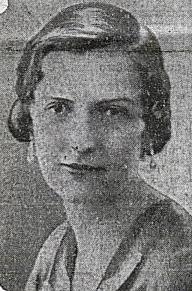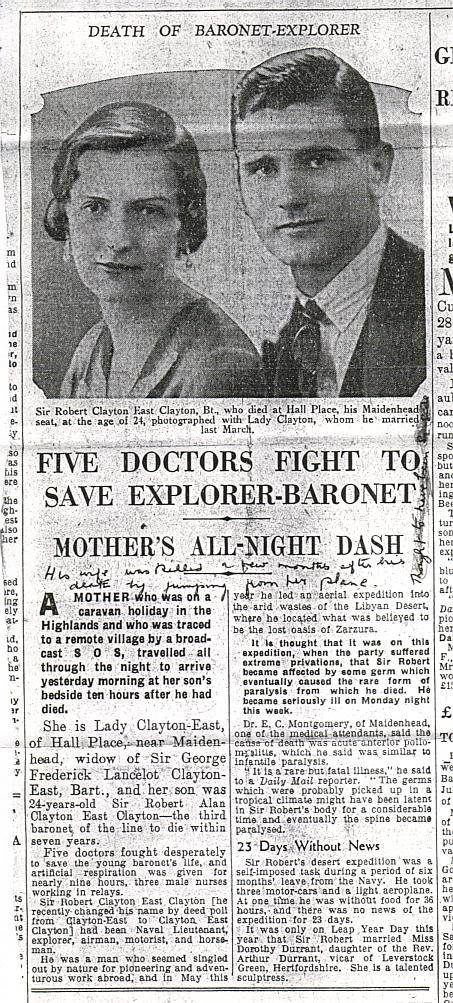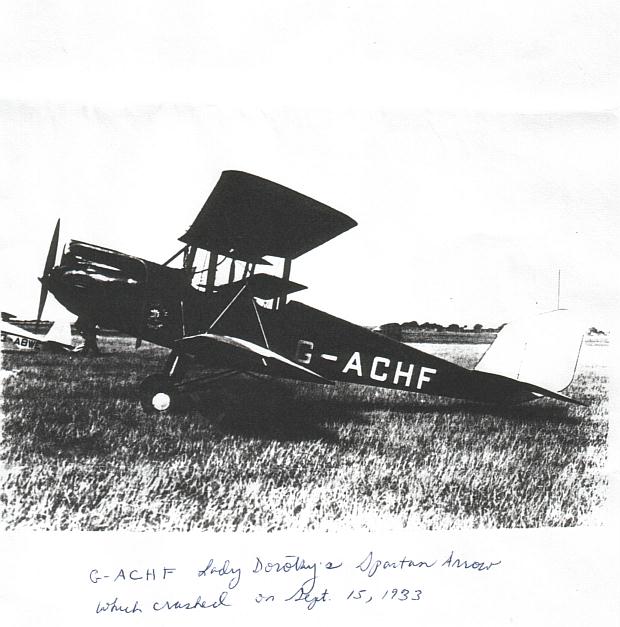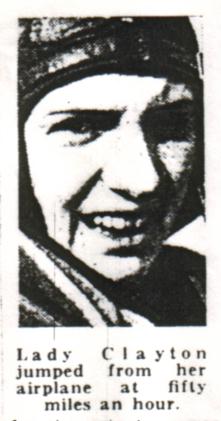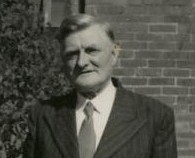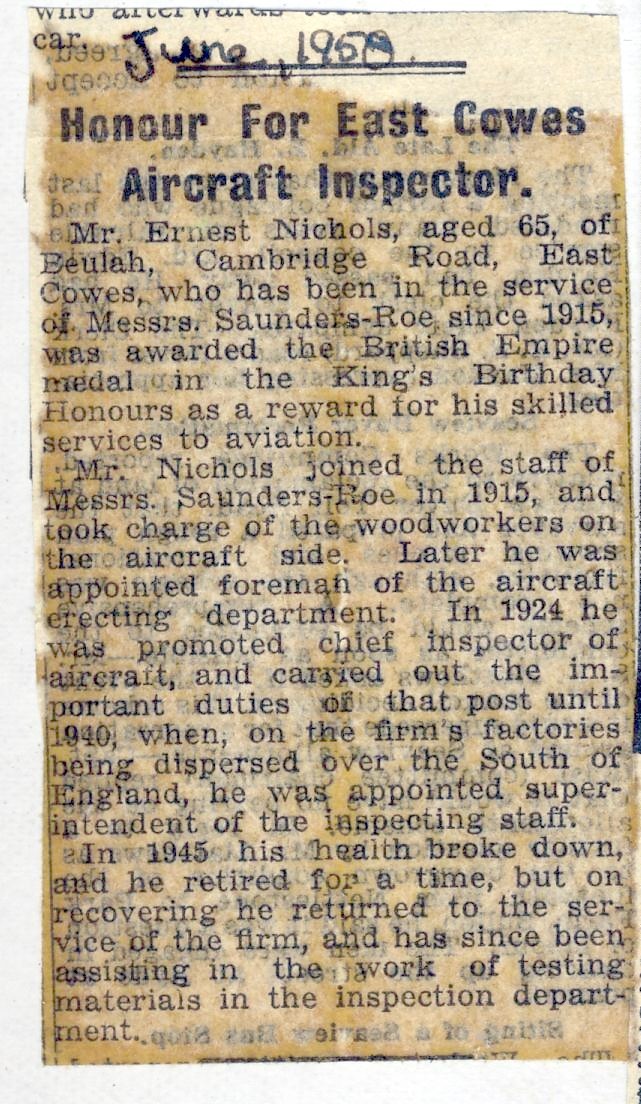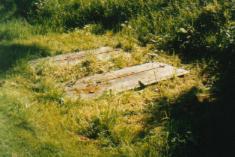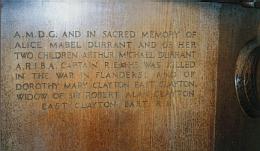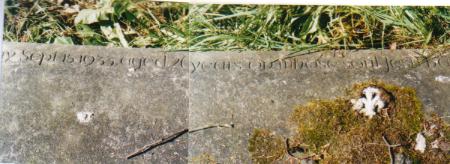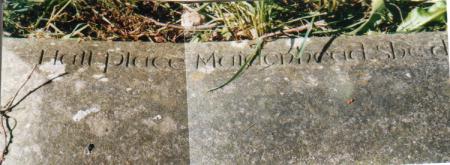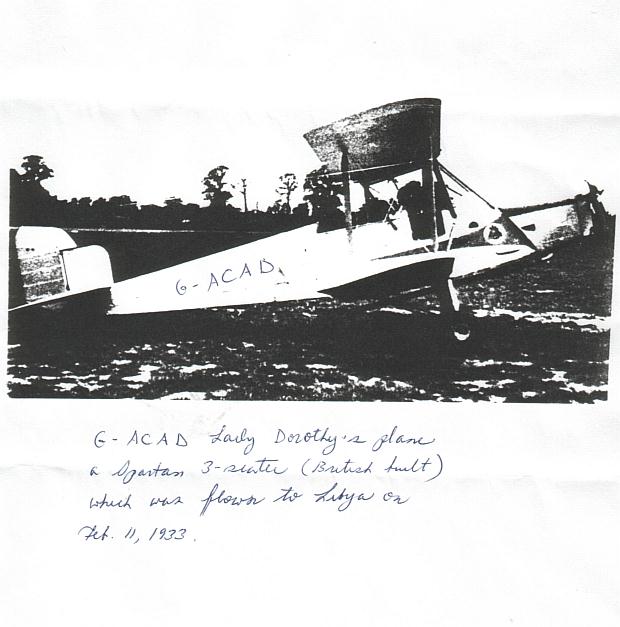NÉE DURRANT. 1906 - 1933
Dorothy's story is one which has always fascinated me from the moment I first heard of it several years ago now, and is one I feel particularly involved with as it very surprisingly linked my own family to her story at the time of her death, and ultimately led me to discover more of my own family history as well as that of Leverstock Green's.
Dorothy's story is one which gradually unfolded over a few years of research, with the ultimate twist in the story coming to light as a result of an American film company getting in touch with me about her.
Four Feathers Film Inc. of Orandell New Jersey contacted me just before Christmas 1997 completely out of the blue. I received a letter from the Film Company seeking information on Lady Dorothy and the Durrant family. They had been told by the Archivist at DBC that photographs of Dorothy's Father the Rev. Arthur Durrant, and the old Rectory in Leverstock Green were to be found in my book. They rather hoped I had more photographs including one of Dorothy, and they wanted permission to reproduce the photos I did have. It turns out that Four Feathers produce multimedia presentations for pre-productions and story boarding. With an end product of a video or CD-ROM. The particular project they contacted me over encompasses early aviators and explorers, hence the interest in Dorothy and her husband. It also sounds from the information the company provided me with, that they eventually hope to produce a full multimedia CD-ROM covering explorers and aviators and if the section on Dorothy was approved they would need broadcast quality photographs and on-camera interviews for inclusion. Although the on camera interviews were ultimately to materialise, I didn't hear from Four Feathers after early 1999,so it looks as if the whole thing may have fizzled out.
The interest of Four Feathers Films prompted me to see if more could be discovered, in particular to see if a photograph of Lady Dorothy could be uncovered.(Had any of us realised that there were five wonderful portraits of her in teh National Portrait Gallery, that would have been easier, but global publication via the Internet was then very much in its infancy. Little did I realise when I started precisely how involved her story and that of her family was to become. I mentioned too earlier that there turned out to be a link with my family, namely my grandfather, who lived and worked on the Isle of Wight. By a strange quirk of fate it would also seem that by the likelihood of Dorothy having been the model for the principle character in a Prize winning novel, which in its turn was to be turned into a multi-million prize winning film, there would be further connections with the Island. More of that later!!!!!!!!
Dorothy's Story
Dorothy was born in Leverstock Green on September 26th 1906, the youngest child of the Rev. Arthur Durrant and his wife Alice Mable. The elder three children were Lorna, born July 22nd 1886; Michael Arthur, and Enid. Michael trained as an architect and was killed in the Great War. He is remembered along with others from Leverstock Green who gave their lives during that conflict, on the war memorial. As no record appears in our Parish registers of Michael or Enid's baptisms, I assume that they, like Lorna, were both born prior to the Durrants moving to Leverstock Green in 1899. Alice Durrant would have been 40 at the time Dorothy was born, and there was a twenty year difference in the ages of Lorna and Dorothy. Dorothy was baptised by her father in Holy Trinity Church on November 4th 1906.
By all accounts the Durrants, who were from a fairly "upper crust" family, and one of whose ancestors was Elizabeth Fry the famous prison visitor/reformer of the early eighteenth century, considered themselves rather socially superior to the general population of Leverstock Green. The Rev. Durrant was an extremely well educated man, having graduated from Emanuel College, Oxford. (Only the moneyed and privileged few had access to a University Education in the last century, and particularly either Oxford or Cambridge.) Mrs. Durrant was definitely considered "a lady" and quite a lot of entertaining went on at the Rectory. A frequent visitor was a Canon Pelly, Dorothy's Uncle. However, before we condemn this outlook, particularly in a member of the cloth and his family, we must remember that this was very much the norm at the beginning of the twentieth century, and would have increased the respect of the Leverstock Green community for their Vicar and his family rather than diminished it.
As a member of "a well bred family", Dorothy was therefore not allowed to attend the village school, but received lessons at home with a governess. Mrs. Durrant invited Hilda Dell, a local girl, to share these lessons with Dorothy and to be a chosen playmate/companion. Hilda's elder sister Beryl, had been similarly invited to benefit from the governess imported for Dorothy's elder sister Enid. It was a great privilege for these local girls to be singled out in this way, particularly as their father was a local hay dealer. Several photographs of the Dell family (relatives of Madge Field's) appear in my book, particularly on pp103, 117 and 119.
According to Betty Thomas, (born Marie Elizabeth Chambers), daughter of Hilda Dell, Dorothy was "a lively lass", generally thought to be very bright and adventurous. In 1920, when the Sunday School photograph on page 49 of my book was taken, (Click here to view) Dorothy would have been 13 years of age. Her sister Lorna has been positively identified by both Betty Thomas and Marjorie Ashby (nee Brigginshaw) as the lady in the large black hat at the very end of the back row, just in front of the window. Neither were able to positively identify Dorothy, but Marjorie thinks she may have been the girl in the white hat next to Lorna, as she is one of the few individuals she cannot name from the photograph. However, since discovering a studio portrait of Dorothy in a 1932 edition of The Daily Express I can say without hesitation that the girl in the large white hat next to Lorna is undoubtedly Dorothy.
Except that she acted as a bridesmaid at her sister Enid's wedding in August 1920, little else is known about Dorothy until she herself marries at the age of 25 on February 29th 1932, and this in itself was shrouded in mystery and unanswered questions. She apparently met Sir Robert Claytom East Clayton, a 24 old officer in the Royal Navy, on an ocean voyage and they were married on Leap Year Day in a London registry office. Dorothy had already achieved a reputation as a sculptress. The couple decided to devote themselves to exploring. But why did they marry in a register office?
According to Who Was Who 1933, Dorothy's husband, Sir Robert Alan Clayton East Clayton, RN; was the 9th Baronet of Marden (created 1732) and the 5th Baronet of Hall Place Maidenhead, (created 1838). He was a Lieutenant in the Royal Navy, and attached to the RAF from 1932, the year of his marriage to Dorothy. He was the only son of the 8th Baronet and Lady Frances Louise Helen Clayton, youngest daughter of the late Lieutenant Col. James Colquhoun, D.L. Sir Robert succeeded his father in 1926. He owned 1500 acres of land at Hall Place near Maidenhead. It is unlikely to have been because the couple were from differing denominations, as the Clayton's are extremely well represented by memorials etc. in their parish church. Whytherefore did Dorothy chose to get married in a registry office rather than her father's church?
It took me a long time to find the likely answer to this question, which turned out to be linked to the story of her sister Lorna's doomed romance; Lorna's suiter have previously being deemed totally unsuitable by her father. Having many years previously emigrated to Canada to "make good", Lorna's suiter had returned to marry his middle-aged bride only to be rebuffed once more by his intended father-in-law, have their story made front page news, and his bride placed in a mental institution. The details of Lorna's story had been made highly public via the National daily papers. For details see page on Arthur Durrant & Family.
It now seems likely that Dorothy's wedding was a quiet one purely in order to avoid publicity. Her sister and her father had already in the months leading to Dorothy's marriage found themselves the centre of national as well as local gossip. At the time of Dorothy's marriage itself, even though the Rev. Durrant had by that time given his consent to the marriage of his elder daughter, Lorna was being nursed in a sanatorium and it would have seemed cruel to have had the large society wedding expected of a couple in Robert & Dorothy's position. Such a wedding would undoubtedly have attracted the major press who would equally as undoubtedly have made capital out of it. They would probably have also made much out of her other sister's story, being the divorcee daughter of a "respected" clergyman.The social niceties of life in the early 1930's are very differnt to those of today.
The middle sister Edith had trained as an artist, and initially made a highly suitable match to Charles Hazeldene Moore of the King's Light Infantry, the only son of Mr. & Mrs. Moore of "Redbourne House" near St. Albans. Their wedding took place in August 1920 in Leverstock Green and was reported in The Gazette for August 28th of that year. The Marriage took place at Holy Trinity Church, The Rev. Durrant giving the bride away, and the ceremony being conducted by Rev. Cannon E.J. Gallop. There were two bridesmaids, the bride's sister Dorothy and her cousin Miss Stella Pelly. The Hon Robert Grimston (son of Viscount Grimston, heir to the Earl of Verulam. Viscount Grimston lived with his fmily in Leverstock Green at his house "Pancake" which he had built shortly before WW1) and Master Richard Randolph acted as pages. Sadly the marriage was not to last, ending in divorce with Enid remarrying. She was said later to go to France to live after (presumably) marrying a Parisian artist. However, it was generally not considered "correct" to talk about Enid as she was divorced. At Dorothy's funeral Enid and her new husband, George Anson, were present. (It is uncertain if he was the French artist, or if she married for a third time.)
As it turned out, the Rev. Durrant would appear to have approved his youngest daughter's marriage, and later performed a Church Blessing on their union. But sadly Dorothy's marriage was not to last much more than six months, as Sir Robert died on 2nd September 1932, having apparently contracted a form of polio whilst on an expedition to Libya undertaken shortly after their marriage. It should also be remembered here that prior to the discovery of antibiotics and ant-viral drugs, the sudden death of otherwise healthy individuals due to various viral and bacterial infections was very common as the school log books and parish registers can grimly testify.
The Daily Express's report for Saturday September 3rd 1932 read as below, The paper also carried two photographs, one a rather fine studio type portrait of Lady Dorothy from which it could be seen that she bore a strong resemblance to her Mother Mrs. Alice Durrant; the other a smaller portrait of Sir Robert.
